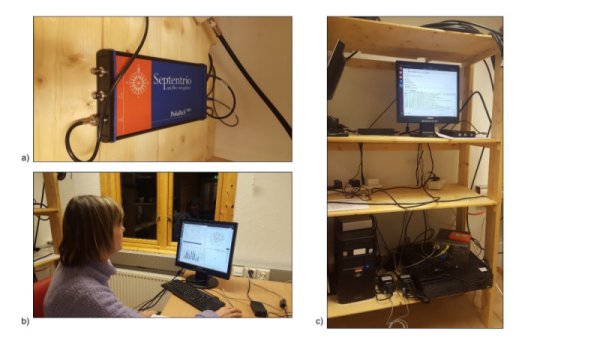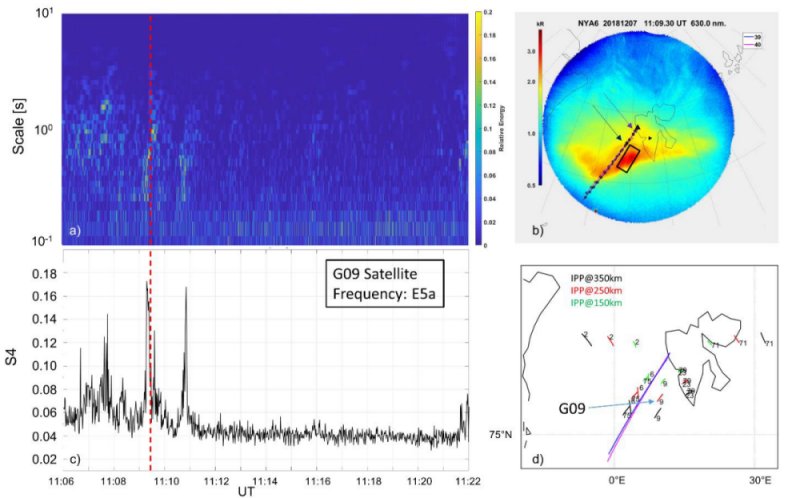The TEC (Total Electron Content) in the atmosphere influences navigation signals sent out from satellites. By accurately measuring the satellite signal it is possible to deduce the electron content along the line of sight. With several measurement stations and the large amount of emitting satellites the TEC can be determined on a larger scale. These measurements are complementary to inner scale measurements, such as those being done from Sounding Rockets.
The SIOS access project GNSS TEC and Scintillation monitoring under the Cusp (GENIUS) provided support to the Grand Challenge Initiative (GCI-Cusp) rocket experiments with detailed regional information on the ionospheric structuring (TEC spatial and temporal gradients) and on the scintillation occurrence, by upgrading the existing network of TEC and scintillation monitors. The data produced contributes to the long-term monitoring of the upper ionised atmosphere over Svalbard, enabling climatological studies of the ionospheric scintillations and of the coupling between ionised and neutral atmosphere. GENIUS was led by a team of researchers from the National Institute of Geophysics and Volcanology in Italy: Luca Spogli (PI), Ingrid Hunstad, Claudio Cesaroni, Lucilla Alfonsi and Vincenzo Romano.
The field work portion of this project consisted of two phases, one in Ny-Ålesund and one in Adventdalen near Longyearbyen, between 7 and 18 January 2019. Two of the project team also attended part of the SIOS Polar Night Week, which coincided with the Adventdalen fieldwork. This gave PI Luca Spogli the opportunity to present the ongoing project to the SIOS community.
A summary of the planned activity and the eventual outcome is given below.
Activity in Ny-Ålesund:
- Removal of old GSV4004 scintialltion monitor at “Dirigibile Italia”
- Replace PolaRxS receiver with PolaRx5S at “Dirigibile Italia”
- This activity was not completed due to a problem with the shipment of the new receiver.
- Routine maintenance (checking of receiver, antenna, cables and connections, TPS, UPS and data backup) was completed.
- Data acquisition at 100 Hz sampling rate was tested.
- Maintenance of GSV4004 at Kartverket (checking of receiver, antenna, cables, TPS, UPS and connections, data backup, upgrade of the operating system of the acquisition PC).

Activity in Adventdalen:
- Upgrade of GSV4004 at SOUSY Svalbard radar
- PolaRx5S was successfully installed.
- Remote sending of TEC and scintillation data to eSWua repository has been set up
- Tests with acquisition at 100 Hz sampling rate.
- Test of the data acquisition at 100 Hz sampling rate.
- Test of raw data streaming to INGV premises.

The project team has published an article related to this activity: De Franceschi, G., Spogli, L., Alfonsi, L., Romano, V., Cesaroni, C., & Hunstad, I. (2019). The ionospheric irregularities climatology over Svalbard from solar cycle 23. Scientific reports, 9(1), 9232.



























